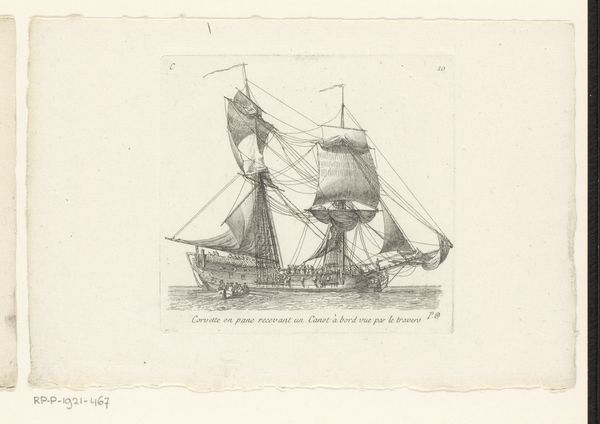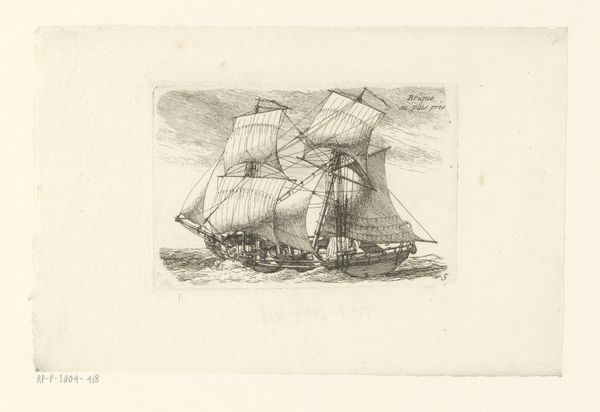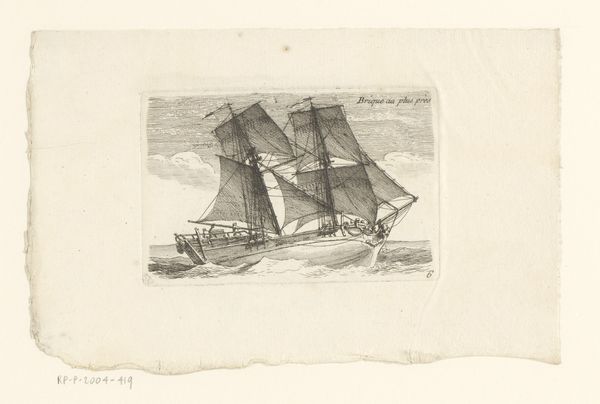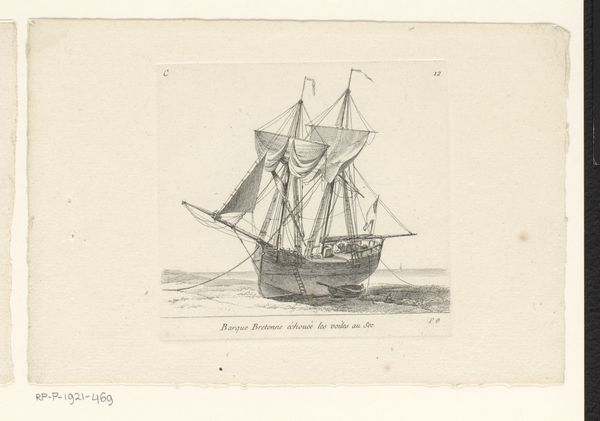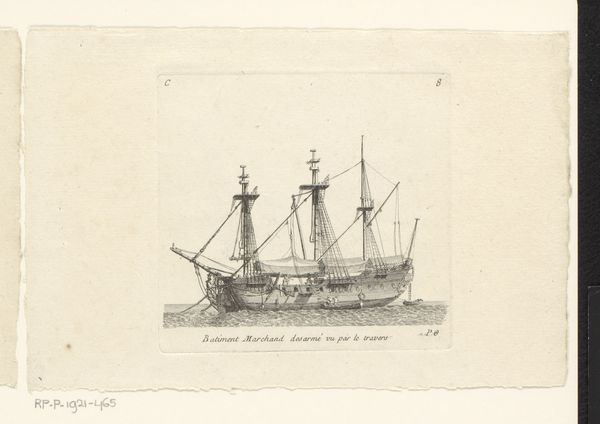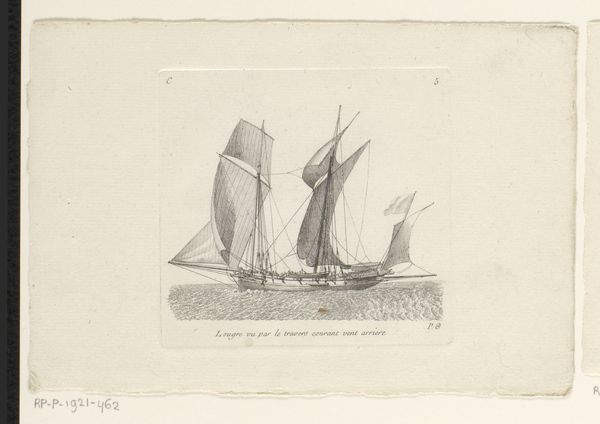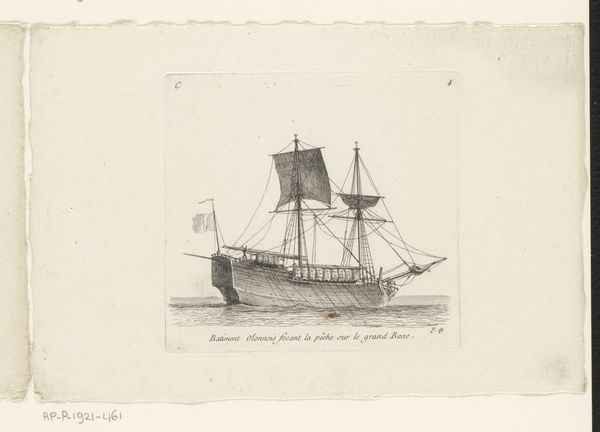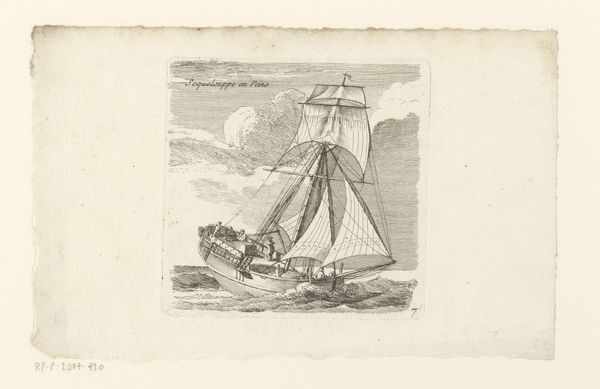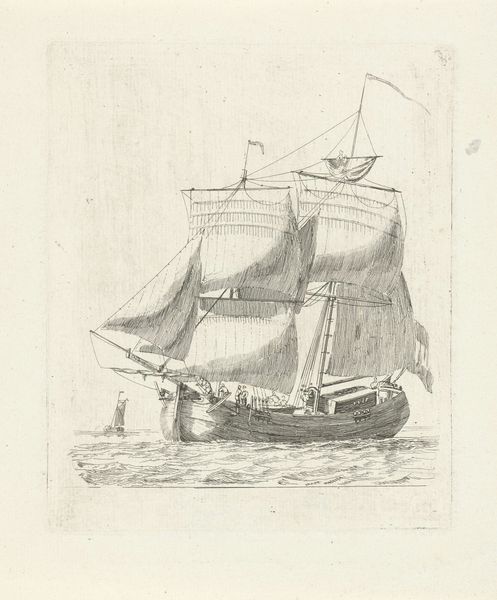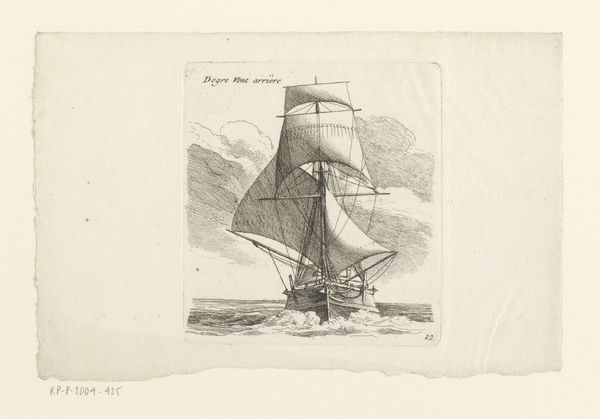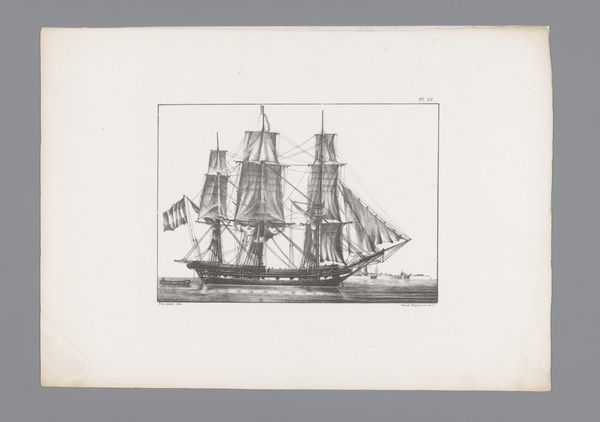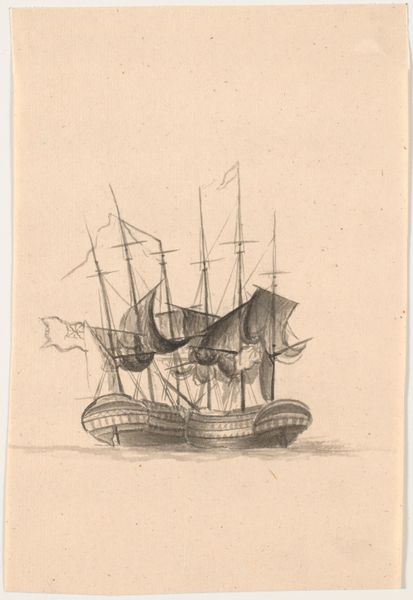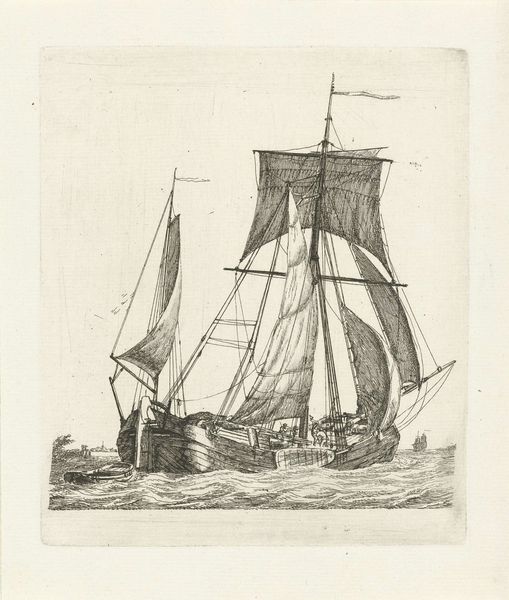
Dimensions: height 79 mm, width 120 mm
Copyright: Rijks Museum: Open Domain
Editor: So, this print is called "Schip op zee" – "Ship at Sea" – created by Nicolas Marie Ozanne between 1738 and 1811, using etching and engraving. The fine lines give it a real sense of movement, almost like the ship is dancing on the waves. It's quite delicate, even though it depicts something so powerful as a ship in the ocean. What do you see in this piece? Curator: I see a vessel laden with symbolism. The ship itself is a powerful image, historically representing journeys, both physical and spiritual. Consider the period; ships like this were conduits of trade, exploration, and often, conquest. Look closely at the waves—they aren’t simply water. In the Baroque era, the sea often represented the unpredictable nature of life, fate, or even the subconscious. The vessel braves the symbolic sea. Does it evoke ideas of the relationship of humanity and Nature for you? Editor: That’s interesting, I hadn’t thought about the waves being more than just…waves! It makes me think about how small the ship, and the people on it, are in comparison to the vastness of the ocean. And all those possible interpretations of that! Curator: Exactly. And consider the phrase inscribed atop the image in French. Doesn’t the description "Petit Corsaire au plus près" suggest an embrace of challenge? Perhaps Ozanne, with this sea scape, is invoking a particular ethos for viewers: that one can direct and control one’s own ship – destiny – or become a small part of some far vaster symbolic scheme. Editor: I see. It is starting to come together more. It's less of just a drawing of ship. It is like the ship means so many other things. I appreciate your bringing up the inscription. I hadn’t focused on that aspect of the work before. Curator: Art so often offers encoded memory in visual form, memory available for continued interpretation. These images give our ancestors voices and remind us that culture evolves through symbols. What started as what you assumed to be a picture of a ship sailing, contains meanings deeper than that surface. Editor: Thank you for your insight. I see that so much history and context is woven into what appears at first to be just an image of ship at sea. I will think about ships differently after this experience.
Comments
No comments
Be the first to comment and join the conversation on the ultimate creative platform.
